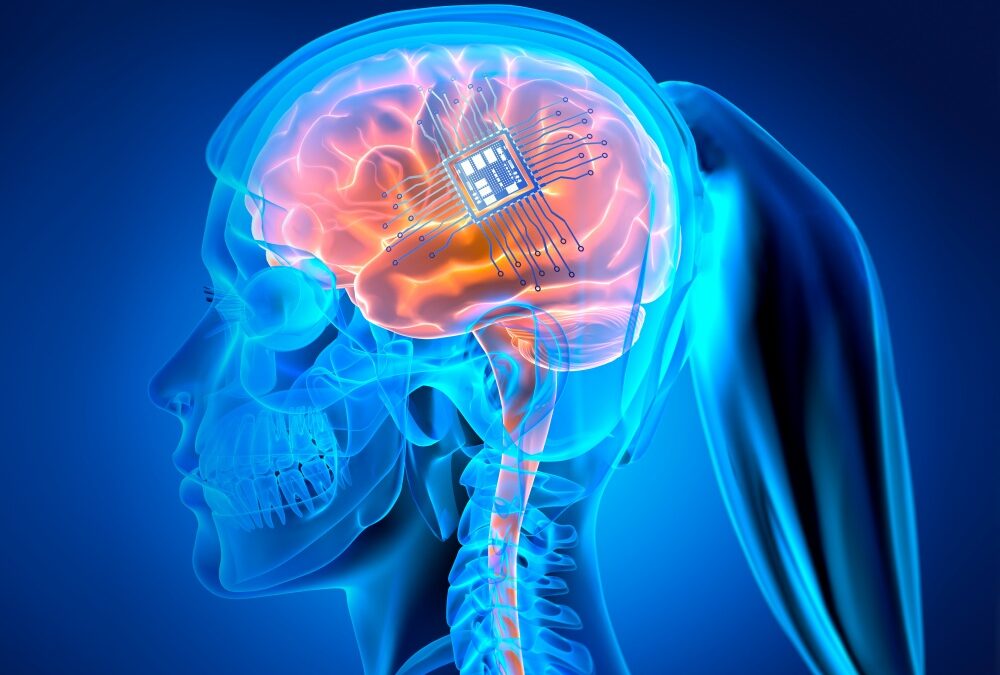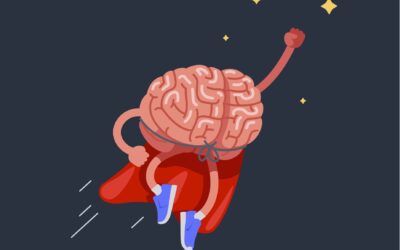Neuroplasticity, Neurogenesis, and synaptic plasticity and Stroke Recovery
The neural processes involved in functional recovery after a stroke, is reliant upon two mechanisms, neurogenesis and neuroplasticity.
Neurogenesis is the process of creating new neurons. This of course would be beneficial in the case of a stroke where neurons have been damaged/destroyed.
Neuroplasticity is the brains ability to adapt in response to new experiences. This is something that occurs throughout life.
Synaptic plasticity is a form of neuroplasticity that involves a change in the electrical signal between two neurons. The “synapse” is the space between two neurons and “plasticity” is the capacity for something to be moldable/changed. Hence, synaptic plasticity. The way that an electrical signal is transmitted is via chemicals called neurotransmitters.
Simplified, a neurotransmitter can either turn an adjoining neuron on (excitatory neurotransmitter) or off (inhibitory neurotransmitter). Synaptic plasticity involves several mechanisms whereby there is a change in the concentration of a neurotransmitters and/or a neurons ability to respond. When it comes to memory and/or learning a motor skill that we want to be able to repeat in the future, the brain rely’s on a mechanism called long-term potentiation (LTP).
LTP is a long lasting strengthening of a signal between to neurons that persists in response to a specific activity. If a neuron is repeatedly stimulated (repetitive practice of an activity), it will build more neurotransmitter receptors, and increase the amount of the neurotransmitter. Together, these two process will increase signal strength in that specific neural network.
What is BDNF and how does it work?
A growing body of evidence indicates that Brain-derived neurotrophic factor (BDNF) is a key player in multiple nerve communication processes. Simplified, BDNF is a molecule that triggers a cascade of actions on a neuron including neurogenesis (neuron growth), and synaptic plasticity (signal strength).
BDNF contributes to neurogenesis (growth of new neurons)
The current understanding is that BDNF binds to the TrKB receptor, triggering the neuron to grow more dendrites. Dendrites are the arms of a neuron that accept the neurotransmitters. More dendrites mean a stronger signal can be received from an adjoining neuron. Of note, current literature suggests this BDNF effect on a neuron is limited to specific brain areas. One area that has been identified is the hippocampus (brain area involved in memory and learning).
BDNF contributes to synaptic plasticity
Again, just to review, synaptic plasticity is the amount of signal strength between two neurons involving the release of a neurotransmitter to send the message. It is believed that BDNF regulates neurotransmitter release. In particular nitric oxide (NO), glutamate (excitatory neurotransmitter) and GABA (inhibitory neurotransmitter); and their receptors. In other words, BDNF might be one key that unlocks the door that allows the neurotransmitter to leave one neuron and the same key that opens the door of an adjoining neuron to allow that neurotransmitter to enter.
It is also believed that BDNF influences long-term potentiation (longer-lasting effects of signal strength). This process might be the result of BDNF influence on gene expression and/or protein synthesis.
Does BDNF Influence Stroke Recovery?
There is a growing body of evidence that suggests that BDNF can act as a repair agent after a stroke. However, the amount of BDNF (after a stroke) does not seem to be enough to overcome the cascade of events that are triggered by ischemia (lack of oxygen in the neuron). Therefore, pharmacologic and rehabilitation strategies have been identified as necessary interventions to increase the amount the BDNF expression. And in this area, there lies some potential opportunities to increase BDNF expression and functional recovery after a stroke.
Pharmacologic Interventions
The majority of the evidence suggests that BDNF can’t cross the blood-brain barrier (the filter that protects the brain). With that said, there does not currently seem to be a mechanism to get BDNF into the brain. Of note, there are ongoing studies that are investigating alternative means. One such study is working on creating a smaller molecule that can cross the blood-brain barrier. Other studies are investigating the potential of injecting a BDNF isoform directly into the damaged area of the brain. However, these studies have not yet proven to be effective.
Aerobic Exercise Increases BDNF expression
Multiple studies have shown a positive correlation between aerobic exercise, cognition, memory and BDNF expression in healthy people. Futhermore, there is considerable literature that increased BDNF expression improves learning, memory, and motor function in many disease processes, including stroke.
How much exercise is necessary to increase BDNF?
The consensus in the literature suggests 30 min of moderate intensity (heart rate goes up but you can still maintain a conversation), 4 days/week.
Aerobic exercise timing
There does appear to be an optimal time at which to perform your aerobic exercise. It is well documented that BDNF levels increase immediately following aerobic exercise. With that said, there are some who theorize that performing aerobic training prior to a cognitive/learning activity might prime the system to optimize synaptic plasticity.
Other articles you might like:
Stroke Arm Rehab Daily Exercise Routine
A stroke or damage to the neurons in the brain can cause the inability to move the arm. It can also cause stiff and tight arm muscles. A stroke arm rehab routine should incorporate the principles of neuroplasticity (the ability of the brain to rewire when presented...
What is your Ikigai?
Not everyone wants to live a long life. But what about a happy and healthy life? If this is you, sit down and pull up a chair. Ikigai might be the answer.
Implications of Sleep and Neurological Rehabilitation
https://youtu.be/FWIX8Ht6bm4 Good quality sleep can dramatically improve neurologic rehabilitation outcomes. Getting adequate sleep might also decrease the rate of disease progression in some neurodegenerative diseases (multiple sclerosis, Parkinson's disease, or...
Stroke Rehabilitation: Overcoming Mental Barriers
Dealing with the aftermatch of a stroke can lead to a whirlwind of emotions including confusion, hopelessness, disappointment, and even despair. If you are in the process of recovery, these emotions are completely normal. Here I break down some of the most common...
Arm Exercises For Stroke Patients (Early Stage)
Arm exercises after a stroke are critical and should be performed daily. Here are the best exercises and why you should be doing these every day. Who will benefit from early-stage stroke arm exercises? The early stage of recovery is considered the first 6 months after...
Not what you get, but what you become
"What you get by achieving your goals is not as important as what you become by achieving your goals." -Zig Ziglar I often get messages from people who are feeling discouraged. "Progress isn't fast enough". "The process is too challenging". Oh, and by the way, "this...
The Gift of Language
“I will never do (X) ” “I Can’t” “I am always going to be this way” “I will be this way forever” “This is impossible” If you have been following me for a while, you know that I discourage this type of language. It is self-limiting at best, and self-destructing at...
Balance Exercises For Stroke Patients
Balance exercises for stroke patients are critical for improving walking confidence and returning to normal life What is Balance? Balance is the ability to maintain the center of mass (the body) within the base of support (the feet). Balance is also the ability of the...
Best Exercise Equipment for Multiple Sclerosis
If you have multiple sclerosis, home exercise equipment is critical for maintaining mobility. Neuroplasticity is the brain's ability to re-organize dependent upon exposure to new or novel experiences. After an acute exacerbation, neuroplasticity requires thousands of...
Best Brain Exercises For Stroke Recovery
Best Brain Exercises For Stroke Recovery A stroke can cause long-term damage to the brain, impair movement, and significantly diminish cognitive abilities. Mobility and strength training to retrain the muscles after a stroke is a huge part of the stroke recovery...










